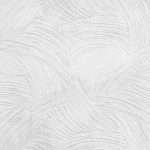Fiber and fibre are two terms that are often used interchangeably, but they actually have some subtle differences between them.
At a basic level, fiber and fibre both refer to a material consisting of long, thin strands, usually made of a plant-based material such as cotton, linen, or hemp. Fibers are used to create fabrics, such as clothing, bedding, and upholstery. Fibre-based products can also be used to make paper, rope, and other materials.
The main difference between the two terms is that “fiber” is the spelling used in American English, while “fibre” is the spelling used in British English. In both cases, the terms refer to the same material.
Another difference between the two terms is that “fiber” is often used to refer to the dietary fibers found in food. These fibers are essential for proper digestion and can help to minimize the risk of certain diseases, such as diabetes and heart disease. “Fibre” is not used as much when referring to dietary fibers.
Finally, some people use the term “fiber” to refer to synthetic fibers, such as nylon and polyester. These materials are often used to make fabrics that are more durable and less prone to wrinkling than natural fibers. “Fibre” is not typically used when referring to synthetic fibers.
In conclusion, fiber and fibre are two terms that are often used interchangeably, but they do have some subtle differences. “Fiber” is the spelling used in American English, while “fibre” is the spelling used in British English. Additionally, “fiber” is often used to refer to dietary fibers and synthetic fibers, while “fibre” is not typically used for either of these purposes.Fiber and fibre are two terms that are often used interchangeably, but they actually have some subtle differences between them.
At a basic level, fiber and fibre both refer to a material consisting of long, thin strands, usually made of a plant-based material such as cotton, linen, or hemp. Fibers are used to create fabrics, such as clothing, bedding, and upholstery. Fibre-based products can also be used to make paper, rope, and other materials.
The main difference between the two terms is that “fiber” is the spelling used in American English, while “fibre” is the spelling used in British English. In both cases, the terms refer to the same material.
Another difference between the two terms is that “fiber” is often used to refer to the dietary fibers found in food. These fibers are essential for proper digestion and can help to minimize the risk of certain diseases, such as diabetes and heart disease. “Fibre” is not used as much when referring to dietary fibers.
Finally, some people use the term “fiber” to refer to synthetic fibers, such as nylon and polyester. These materials are often used to make fabrics that are more durable and less prone to wrinkling than natural fibers. “Fibre” is not typically used when referring to synthetic fibers.
In conclusion, fiber and fibre are two terms that are often used interchangeably, but they do have some subtle differences. “Fiber” is the spelling used in American English, while “fibre” is the spelling used in British English. Additionally, “fiber” is often used to refer to dietary fibers and synthetic fibers, while “fibre” is not typically used for either of these purposes.Fiber and fibre are two terms that are often used interchangeably, but they actually have some subtle differences between them.
At a basic level, fiber and fibre both refer to a material consisting of long, thin strands, usually made of a plant-based material such as cotton, linen, or hemp. Fibers are used to create fabrics, such as clothing, bedding, and upholstery. Fibre-based products can also be used to make paper, rope, and other materials.
The main difference between the two terms is that “fiber” is the spelling used in American English, while “fibre” is the spelling used in British English. In both cases, the terms refer to the same material.
Another difference between the two terms is that “fiber” is often used to refer to the dietary fibers found in food. These fibers are essential for proper digestion and can help to minimize the risk of certain diseases, such as diabetes and heart disease. “Fibre” is not used as much when referring to dietary fibers.
Finally, some people use the term “fiber” to refer to synthetic fibers, such as nylon and polyester. These materials are often used to make fabrics that are more durable and less prone to wrinkling than natural fibers. “Fibre” is not typically used when referring to synthetic fibers.
In conclusion, fiber and fibre are two terms that are often used interchangeably, but they do have some subtle differences. “Fiber” is the spelling used in American English, while “fibre” is the spelling used in British English. Additionally, “fiber” is often used to refer to dietary fibers and synthetic fibers, while “fibre” is not typically used for either of these purposes.Fiber and fibre are two terms that are often used interchangeably, but they actually have some subtle differences between them.
At a basic level, fiber and fibre both refer to a material consisting of long, thin strands, usually made of a plant-based material such as cotton, linen, or hemp. Fibers are used to create fabrics, such as clothing, bedding, and upholstery. Fibre-based products can also be used to make paper, rope, and other materials.
The main difference between the two terms is that “fiber” is the spelling used in American English, while “fibre” is the spelling used in British English. In both cases, the terms refer to the same material.
Another difference between the two terms is that “fiber” is often used to refer to the dietary fibers found in food. These fibers are essential for proper digestion and can help to minimize the risk of certain diseases, such as diabetes and heart disease. “Fibre” is not used as much when referring to dietary fibers.
Finally, some people use the term “fiber” to refer to synthetic fibers, such as nylon and polyester. These materials are often used to make fabrics that are more durable and less prone to wrinkling than natural fibers. “Fibre” is not typically used when referring to synthetic fibers.
In conclusion, fiber and fibre are two terms that are often used interchangeably, but they do have some subtle differences. “Fiber” is the spelling used in American English, while “fibre” is the spelling used in British English. Additionally, “fiber” is often used to refer to dietary fibers and synthetic fibers, while “fibre” is not typically used for either of these purposes.


